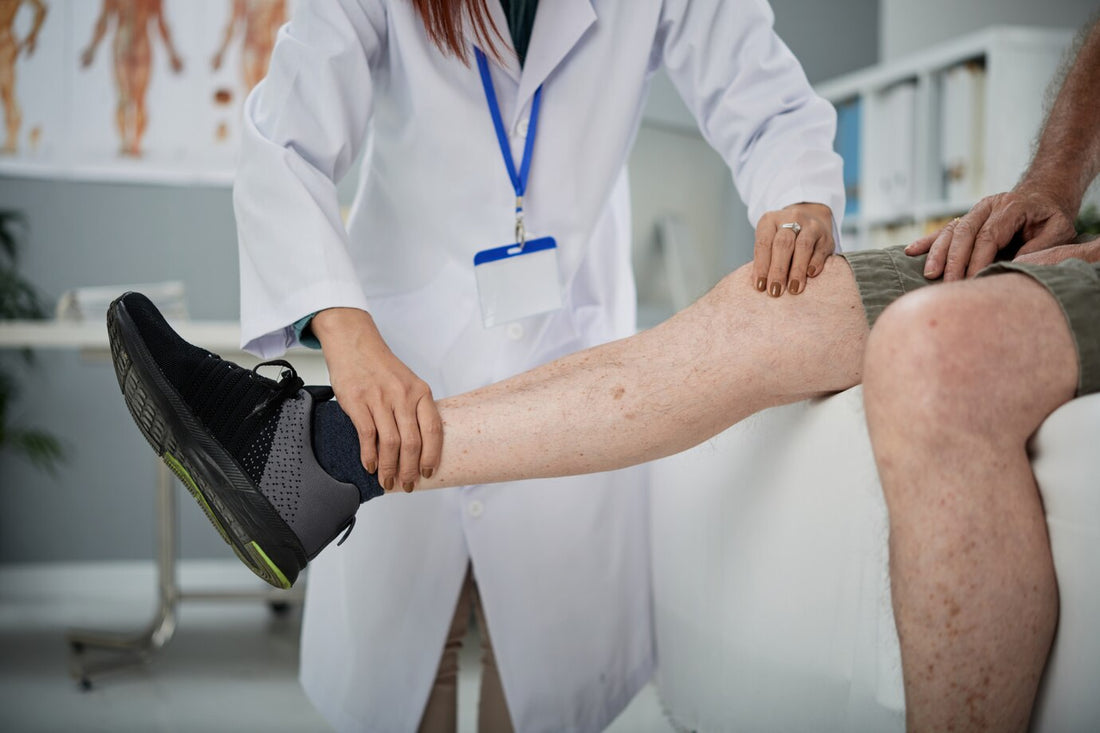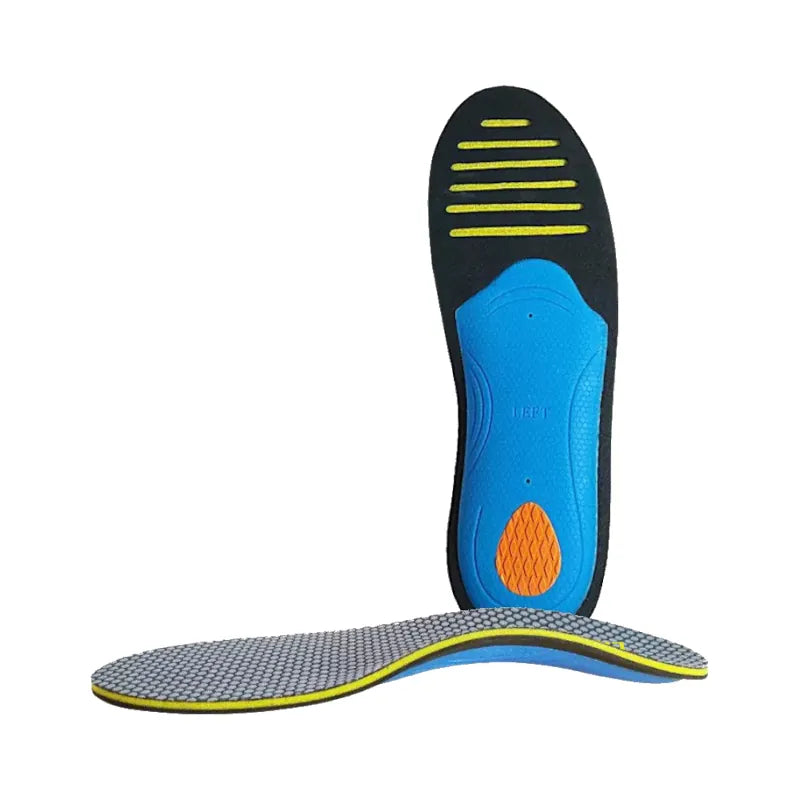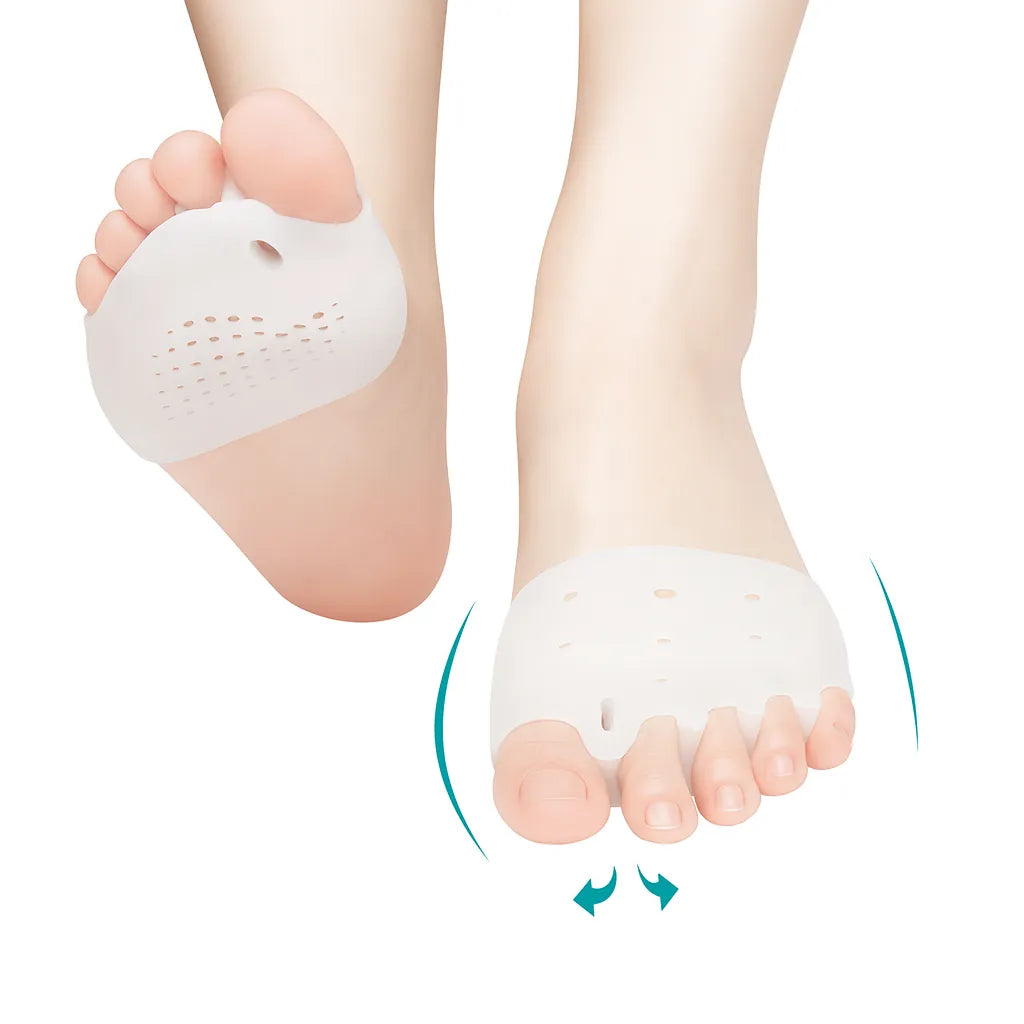
Understanding The Anatomy Of Foot Pain
Share
Decoding Foot Pain: Anatomy, Causes, and Treatment
As someone who loves running, I've experienced my fair share of foot pain. It's frustrating when discomfort hinders your favorite activities. But have you ever wondered what causes foot pain in the first place? Well, it turns out that understanding the anatomy of your feet is crucial in finding the answers.

Your feet are complex structures composed of bones, muscles, tendons, fascia, ligaments, and nerves. Each component plays a vital role in foot function and can contribute to physiological foot pain. By delving into the intricate details of their anatomy, we can gain a better understanding of how different structures interact and potentially cause discomfort.
Anatomy of the Foot and Ankle
The foot is a complex structure composed of various bones, ligaments, and muscles that work together to support our weight and enable movement. Understanding the anatomy of the foot and ankle can help us comprehend the causes and potential treatments for foot pain.
Bones and Arches
In total, there are 26 bones in each foot, forming two significant arches: the longitudinal arch (running from heel to toe) and the transverse arch (running across the midfoot). These arches provide flexibility, shock absorption, and stability while walking or running.
Ligaments and Fascia for Stability
Ligaments play a crucial role in maintaining stability within the foot and ankle joints. They connect bones to other bones, providing support during movement and prevent exacerbated range of motion. The ankle joint is susceptible to injury such as sprains when it is twisted forcefully or stretched beyond its normal range of motion, extending or rupturing these ligaments.
The plantar fascia goes along the bottom of your foot, supporting your arch.
Muscles for Support
Muscles in the lower leg control movement in our feet while also providing support. The tibialis posterior muscle supports both arches of our feet by controlling pronation (rolling inward) during walking or running. Other muscles, such as the intrinsic ones, help with flexing or extending toes, allowing us to grip surfaces or push off when moving forward.
Understanding these key components - bones, ligaments, muscles - as well as how they interact within our feet can give us valuable insight into why we may be experiencing foot pain. By pinpointing specific areas affected by conditions like ankle sprains or issues with joints such as big toe joint arthritis, we can seek appropriate treatment options tailored to alleviate discomfort effectively.
Causes and Treatment of Pain in Different Parts of the Foot
Plantar fasciitis is a common cause of heel pain. It occurs when the plantar fascia ligament, which runs along the bottom of the foot, becomes inflamed. This can happen due to excessive strain or repetitive stress on this structure. People with plantar fasciitis often experience sharp pain in their heels, especially when taking their first steps in the morning.
Bunions are another cause of foot pain. These bony bumps form at the base of the big toe and can cause pain on the side of the foot. Bunions often result from wearing tight or ill-fitting shoes, as they put pressure on the joint and force the big toe to angle towards the other toes.
Metatarsalgia refers to pain in the ball of your foot. It typically occurs due to excessive pressure or overuse, such as prolonged standing or high-impact activities like running or jumping. The metatarsal bones at the front part of your foot bear most of your body weight, so any issues with these bones can lead to discomfort and pain.
Achilles tendinitis is characterized by inflammation in the Achilles tendon, which connects your calf muscles to your heel bone. This condition commonly arises from repetitive stress or overuse, such as intense physical activity without proper warm-up or stretching. Achilles tendinitis causes pain and stiffness in the back of your leg near your heel.
Understanding these common causes of foot pain is crucial for finding effective treatment options. Depending on the specific condition and its severity, treatments may include:
- Resting and avoiding activities that exacerbate symptoms.
- Wearing supportive footwear with cushioning and arch support.
- Using orthotic inserts or shoe inserts to provide additional support.
- Engaging in physical therapy exercises to strengthen muscles and improve flexibility.
- In some cases, more advanced treatments like corticosteroid injections or surgery may be necessary.
By identifying the cause of foot pain and seeking appropriate treatment, individuals can find relief and improve their overall quality of life.
Role of Peroneal Nerves in Foot Pain
The peroneal nerves, which branch off from the sciatic nerve located behind your knee, play a crucial role in controlling movement and sensation in your lower legs and feet. These nerves are responsible for transmitting signals that allow you to move your ankles and toes, as well as perceive sensations like touch and temperature.
When these nerves become damaged or compressed, it can result in various symptoms related to foot pain. Conditions such as peroneal neuropathy or entrapment can lead to significant discomfort due to dysfunction of the peroneal nerves.

One common symptom of peroneal nerve damage is numbness or tingling sensation in the feet or ankles. You may also experience weakness in the affected area, making it difficult to lift your foot properly while walking or running. You might notice a decrease in muscle control and coordination. Due to loss of sensation, your foot may get some wounds that can get infected.
In cases where foot pain is attributed to peroneal neuropathy or entrapment, treatment options may include physical therapy exercises aimed at strengthening muscles surrounding the affected area. In severe cases, surgery may be necessary to restore nerve function.
Understanding how these peroneal nerves contribute to foot pain can help individuals recognize when they should seek medical attention for their symptoms. By addressing any underlying issues with these nerves, individuals can find relief from their foot pain and regain normal function.
Morton Neuroma: Impact on Foot Pain
Morton's neuroma is a painful condition that affects the nerves between the toes, typically the third and fourth. This condition occurs when there is compression or irritation of the nerve due to factors such as wearing tight shoes or repetitive stress.
The primary symptom of Morton's neuroma is sharp, burning pain in the ball of the foot. This pain can be quite intense and may radiate towards the affected toes and leg. In addition to pain, individuals with this condition may experience tingling or numbness in the affected area.
Understanding how to manage Morton's neuroma is crucial to alleviate foot pain. Here are some treatment options that can help:
Wearing Proper Footwear
- Opt for shoes with a wide toe box to reduce pressure on the affected area.
- Choose footwear with adequate cushioning and arch support to provide comfort and stability.
Orthotic Devices
- Custom orthotic devices or shoe inserts can help redistribute pressure on the foot and relieve symptoms.
Corticosteroid Injections
- In some cases, corticosteroid injections may be recommended to reduce inflammation and alleviate pain temporarily.
Physical Therapy
- Working with a physical therapist can help improve foot mechanics and strengthen surrounding muscles, reducing strain on the affected nerve.
Surgical Intervention
- When conservative treatments fail to provide relief, surgical intervention may be considered. The procedure involves removing or decompressing the affected nerve.
It's important to consult with a healthcare professional for an accurate diagnosis and personalized treatment plan tailored to your specific needs. Remember, each individual's experience with Morton's neuroma may vary, so it's essential to find an approach that works best for you.
Diabetes, Vascular Disease, and Foot Pain Connection
Diabetes and vascular disease can have a significant impact on foot health. Let's take a closer look at the connection between these conditions and foot pain.
Diabetes can lead to peripheral neuropathy, causing loss of sensation and foot pain.
For individuals with diabetes, high blood sugar levels can damage the nerves in the feet over time. This condition is known as peripheral neuropathy. As a result, individuals may experience a loss of sensation in their feet or even feel persistent pain. It's important for those with diabetes to monitor their blood sugar levels closely and work with their healthcare provider to manage this chronic condition effectively.
Poor blood circulation associated with vascular disease can result in foot ulcers and slow healing.
Vascular disease refers to conditions that affect the blood vessels, such as peripheral artery disease (PAD). When blood flow to the feet is compromised due to narrowed arteries, it can lead to poor circulation. This reduced blood supply hinders the body's ability to heal wounds properly and increases the risk of developing foot ulcers. It's crucial for individuals with vascular disease to consult their doctors for appropriate management strategies.
Regular foot care is crucial for individuals with diabetes to prevent complications such as infections or amputations.
Due to reduced sensation and impaired healing abilities, people with diabetes are more prone to developing foot problems. Therefore, practicing good foot care habits becomes essential in preventing complications like infections or even amputations. Some key steps include:
- Inspecting feet daily for any cuts, blisters, or sores.
- Keeping feet clean by washing them regularly.
- Moisturizing feet but avoiding applying lotion between toes.
- Wearing comfortable shoes that provide proper support.
- Avoiding walking barefoot or using heating pads on feet.
Managing blood sugar levels and maintaining good overall health are essential for reducing foot pain in diabetic patients.
Controlling blood sugar levels through medication, diet, and exercise is crucial for minimizing the risk of foot pain in individuals with diabetes. Maintaining a healthy lifestyle by eating nutritious meals, staying physically active, and avoiding smoking can contribute to better overall health and improved foot wellbeing.
Understanding the connection between diabetes, vascular disease, and foot pain empowers individuals to take proactive measures in managing these conditions effectively. By prioritizing regular foot care and adopting healthy habits, it's possible to reduce the risk of complications and maintain optimal foot health.
Key Takeaways from Understanding Foot Pain Anatomy
Now that you have a better understanding of the anatomy of foot pain, it's important to remember a few key takeaways. First and foremost, don't ignore any persistent or worsening foot pain. Your feet are the foundation of your body, and any discomfort can have a significant impact on your overall well-being. Seek medical attention if you experience prolonged pain or if it starts affecting your daily activities.
Secondly, prevention is key. Taking care of your feet through proper footwear, regular exercise, and maintaining a healthy lifestyle can go a long way in preventing foot pain. Remember to listen to your body's cues and make adjustments accordingly.
Lastly, don't hesitate to consult with a healthcare professional specializing in foot health. They can provide personalized advice and treatment options based on your specific condition. Your feet deserve the best care possible!
FAQs about Foot Pain
What are some common causes of foot pain?
Foot pain can be caused by various factors such as plantar fasciitis, bunions, arthritis, stress fractures, or even ill-fitting shoes. It's essential to identify the root cause to determine the appropriate course of action for relief.
How can I prevent foot pain?
Preventing foot pain involves wearing comfortable shoes that provide adequate support and cushioning. Maintaining a healthy weight, stretching before physical activity, and avoiding excessive high-impact exercises are also beneficial preventive measures.
When should I seek medical attention for foot pain?
If you experience severe or persistent foot pain that interferes with your daily activities or shows signs of infection (such as redness, swelling, or drainage), it is crucial to consult with a healthcare professional promptly.
Can diabetes contribute to foot pain?
Yes, diabetes can lead to various complications in the feet due to nerve damage (neuropathy) and poor circulation (vascular disease). Regular monitoring and proper management of blood sugar levels are essential for preventing or managing foot pain in diabetic individuals.
Are there any natural remedies for foot pain?
While some home remedies, it is important to consult with a healthcare professional for an accurate diagnosis and appropriate treatment plan tailored to your specific condition.
Author Bio

Inês Pinheiro
Certified Physiotherapist for Shoulder and Knee Injuries
Inês is a skilled physical therapist with a special interest and extensive experience in working with athletes, specifically football players and also neurologic patients.













